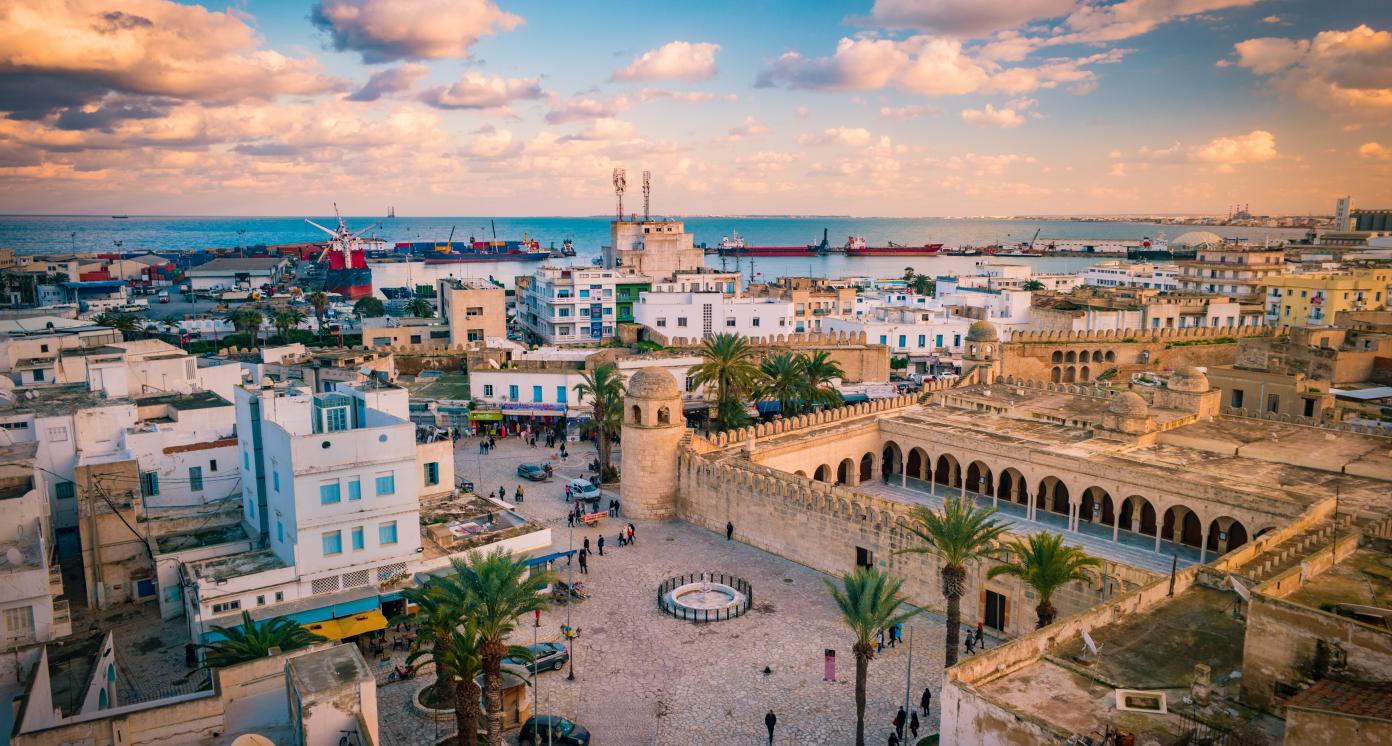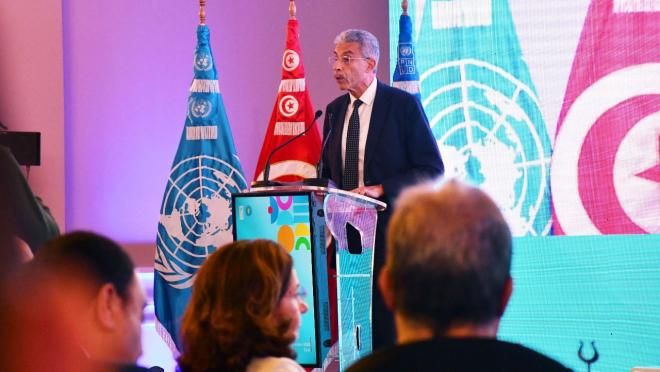Tunisia is situated between Algeria and Libya, bordering the Mediterranean Sea. The country shares maritime borders with Italy. Tunisia covers an area of 163,610 km². The landscape of Tunisia is mountainous in the northwest, where the eastern foothills of the Atlas Mountains are located. Within the mountain range is Jebel ech Chambi at 1,544 m, the highest point in the country. Further to the east, along Tunisia's eastern Mediterranean coast, is a broad coastal plain known as the Tunisian Sahel; the area is famous for its Olive cultivation. To the south lies a hot and dry central plain, the semiarid area merges into the Sahara.
Tunisia's population is 11.7 million people (in 2020); the capital and largest city is Tunis. Spoken languages are Arabic (official), French, English, and other languages in tourist regions. The official Religion is Islam.
18



Food and Beverage, Infrastructure, Renewable Resources and Alternative Energy
0.740
How is this information gathered?
SDG Investor Maps employ an 8-step methodology, combining data research and stakeholder consultations to identify Investment Opportunity Areas (IOAs) and potential business models with significant financial and impact potential.
Disclaimer
UNDP, the Private Finance for the SDGs, and their affiliates (collectively “UNDP”) do not seek or solicit investment for programmes, projects, or opportunities described on this site (collectively “Programmes”) or any other Programmes, and nothing on this page should constitute a solicitation for investment. The actors listed on this site are not partners of UNDP, and their inclusion should not be construed as an endorsement or recommendation by UNDP for any relationship or investment.
The descriptions on this page are provided for informational purposes only. Only companies and enterprises that appear under the case study tab have been validated and vetted through UNDP programmes such as the Growth Stage Impact Ventures (GSIV), Business Call to Action (BCtA), or through other UN agencies. Even then, under no circumstances should their appearance on this website be construed as an endorsement for any relationship or investment. UNDP assumes no liability for investment losses directly or indirectly resulting from recommendations made, implied, or inferred by its research. Likewise, UNDP assumes no claim to investment gains directly or indirectly resulting from trading profits, investment management, or advisory fees obtained by following investment recommendations made, implied, or inferred by its research.
Investment involves risk, and all investments should be made with the supervision of a professional investment manager or advisor. The materials on the website are not an offer to sell or a solicitation of an offer to buy any investment, security, or commodity, nor shall any security be offered or sold to any person, in any jurisdiction in which such offer would be unlawful under the securities laws of such jurisdiction.




















